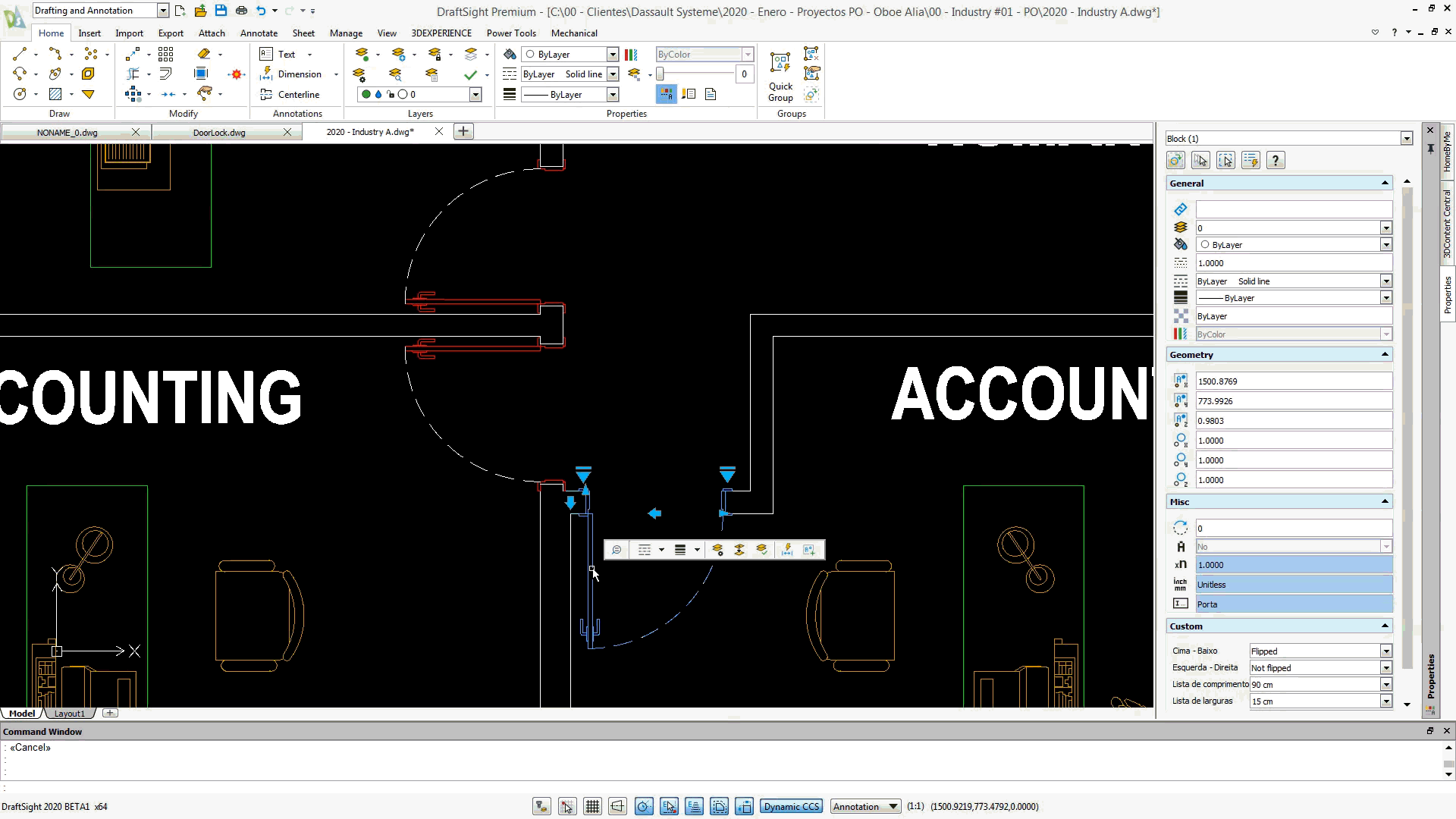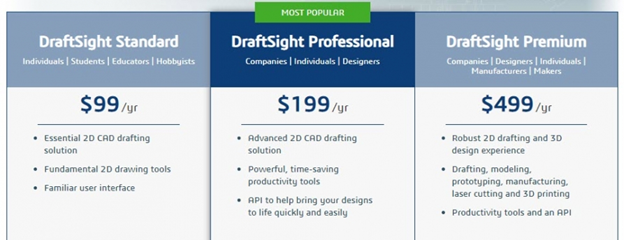
; 50 . . — ; 21 000 (Lynn_Allen) .
, — , . , - , . DraftSight, . , .

For twenty years I have been doing the same thing: explaining to people what was new in the next version of their good old CAD. During this time, I have written three books, countless articles for Cadalyst Magazine, and hundreds of video tutorials.
But things are changing, and my personal comfort zone is a thing of the past. I realized that for those who do not want to overpay for a promoted name, there are many alternatives. But how good are these alternatives? How friendly are they with the DWG format? What are these clones - cheap fakes, like fake Adidas, or are they real CAD systems - serious, reliable and of high quality? And most importantly, can the new CAD system become a convenient and comfortable environment for the user?
Now that I've moved to Dassault Systèmes and got to know DraftSight well, I can confidently answer all these questions "YES!" DraftSight not only records 100% compatible DWG files, with all blocks, dimension styles, layers, etc. You will immediately feel in a familiar environment, and for much less money. User-friendly interface, nice appearance, and even the command names sound familiar. You don't have to remember which commands are different - you can enter the command name the way you are used to, and DraftSight will prompt you for the correct command. Well, if you (like me) do not like to relearn, then don’t!
For example, you want to clean up a drawing file of unused blocks, unnecessary layers, and the like. In these cases, you are used to typing the PURGE command. In DraftSight, a similar command is called CLEAN (or CL for short). You don't have to load your head with all these differences. Just start typing PU (or the whole word PURGE) as usual - and DraftSight will offer you the correct CLEAN command!

Figure: 1. DraftSight understands other CAD commands and translates them into corresponding DraftSight commands.
Here we smoothly move on to the next point. About ten years ago, many CAD developers borrowed the ribbon interface from Microsoft Office and began forcibly transferring users to the ribbon. Sometimes it got to the point that in the latest versions of applications it was impossible to return the classic look of the menu. The DraftSight developers have done much smarter. They made it possible for the users to choose the style of the interface. Function keys meanings are familiar; as always, you can go to editing by double-clicking on the object. And, of course, everyone's favorite command line: you will enter commands in the lower left corner, as was conceived by the founding fathers at the dawn of CAD (however, you can drag the command line anywhere!).And no one imposes this terrible gray color on you (did anyone really like this gray background?) It has long been proven that black letters and icons on a light background are the most comfortable combination for the eyes. Conversely, seeing a blue icon on a gray background is almost hopeless.

Figure: 2. Agree, a familiar and pleasant interface?
The only thing I regret is that in DraftSight, you cannot change the icons in the status bar to plain text. However, these icons are few and far between.
One of the coolest tools is Constraints; they are at the forefront of DraftSight. Dependencies are the first step to parametric modeling. For those who have mastered the constraints, it is much easier to move to the next level, to SOLIDWORKS or BIM applications. In DraftSight, dependencies are given a separate tab on the ribbon.
Even before I came to Dassault Systèmes, I envied the white envy of the PowerTrim team, which no other CAD application has except DraftSight. The TRIM and EXTEND commands are traditionally considered the most used, and DraftSight has perfected this functionality. Just look at fig. 3. No unnecessary movements such as selection of cutting edges and borders. You just move the mouse, and the lines are cut or stretched as you need!

Figure: 3. PowerTrim - these are the same commands Trim and Extend, but without unnecessary clicks
One of the features of DraftSight, which has no analogues in most competitors - dynamic blocks. Anyone who has experienced the benefits of dynamic blocks cannot do without them. Take a look at fig. 4.

Fig. 4. DraftSight makes it easy to create and insert dynamic blocks
Can you customize the interface to suit your habits? Of course! You can change toolbars, ribbon, keyboard shortcuts, and so on. In general, we can say that customization of the interface in DraftSight is easier than that of competitors. Can LISP programs be run? Sure! Any AutoLISP files and scripts written for other platforms will run flawlessly in DraftSight.
DraftSight was originally conceived to relieve SOLIDWORKS users from the hassle of reading DWG files created in other applications. Nobody expected that the number of downloads of the new CAD system would be in the millions. Initially, DraftSight developers considered mechanical engineers as their target audience, but gradually, as it gained popularity among designers, architects and civil engineers began to make up a significant proportion of the user base. Naturally, developers began to add specialized teams to DraftSight for different industries, including elements specific to BIM.
DraftSight can also write drawing files up to the DWG versions that were in use back in the early nineties! I know companies that buy DraftSight just to be able to save files securely. Take a look at fig. 5 and appreciate the variety of formats.

Figure: 5. DraftSight records drawing files in a wide variety of DraftSight formats
not burdened with 40 years of history, so it is much "lighter" than the rest. It has more modest hardware requirements - graphics capabilities and PC processing power. This is also saving. Are all the commands found in traditional CAD systems in DraftSight? Of course not, and it is not necessary. Who needs 38-year-old features? People need only the best of them, modern teams that help design faster and better. Only the most useful commands are included in DraftSight. Many of the functions that were considered useful 30 years ago have simply lost their meaning today.
DraftSight is offered in a variety of configurations to suit different budgets and needs.
The most modest configuration, DraftSight Standard, costs only $ 99 per year; it cannot run programs on AutoLISP, and some other functions are missing, for example, formulas in tables. For comparison: the cheapest configuration of a hyped CAD system costs $ 420 per year.
My personal favorite is the DraftSight Professional configuration; the only thing missing is 3D modeling. There is even an API in this configuration. The price seems reasonable to me: just $ 100 more than the Standard.
If you can't do without 3D, then you should take a closer look at DraftSight Premium. For $ 499 per year, you will get surface modeling and solid building capabilities. Not bad savings compared to classic CAD, which costs $ 1,690 a year! It also includes a great dependency functionality that will allow you to gradually move on to real parametric modeling.

Figure: 6. DraftSight is offered in three different configurations
There is also a fourth option: to buy a perpetual license called DraftSight Enterprise - this is for those who prefer to actually own the product. In this era of massive subscriptions, I would prefer annual licenses; I love the low annual fees and the regular automatic updates (developers are constantly adding great new features to DraftSight). However, the choice is yours. Download a free trial version of DraftSight and see for yourself that my words are not empty phrases.
You can learn more about DraftSight on the official website
and on the SOLIDWORKS website.
Subscribe to Dassault Systèmes news and stay up to date on innovations and modern technologies.
Vkontakte
3DS Blog WordPress
3DS Blog on Render
3DS Blog on Habr